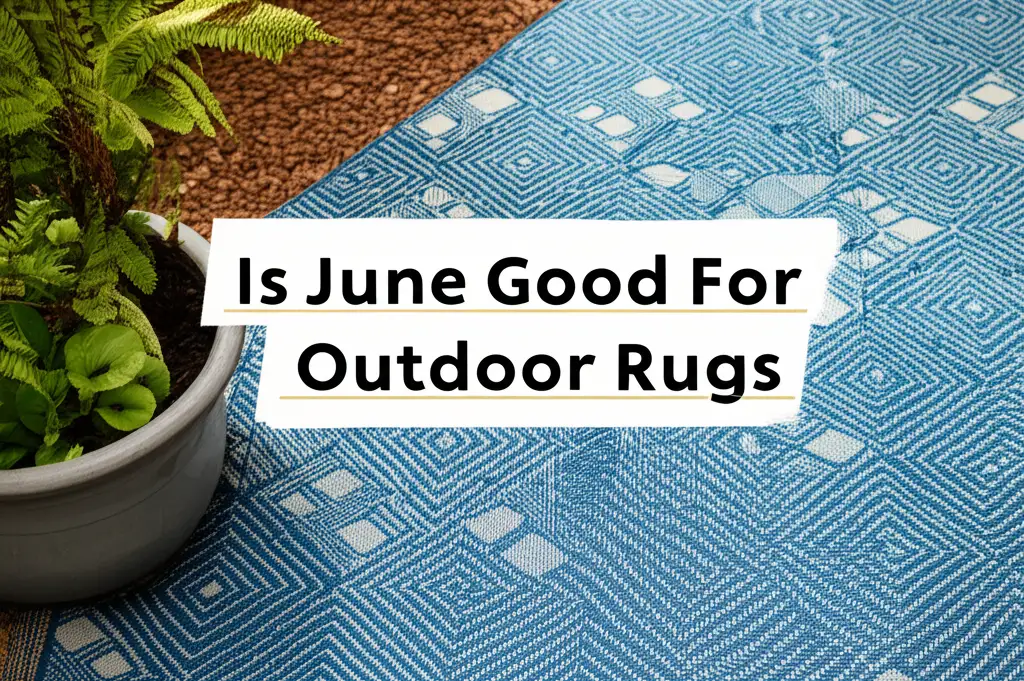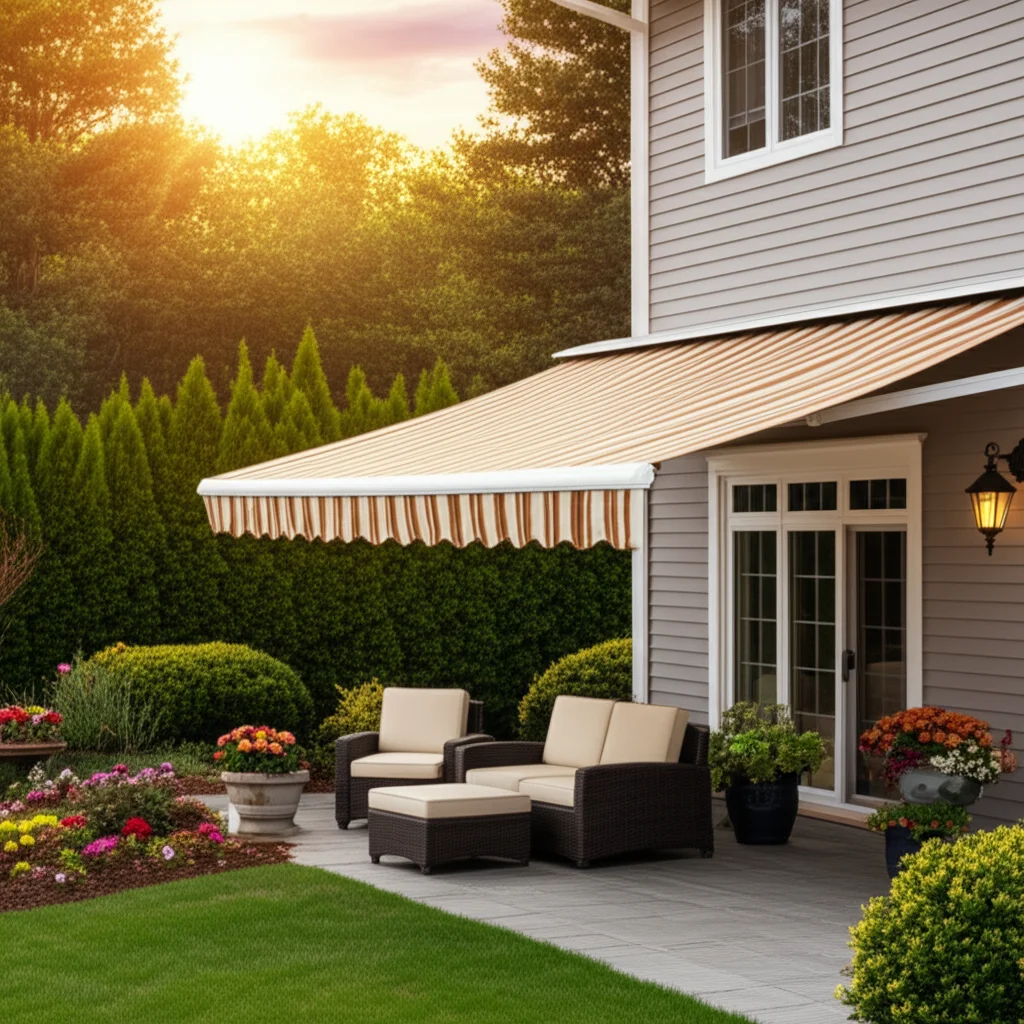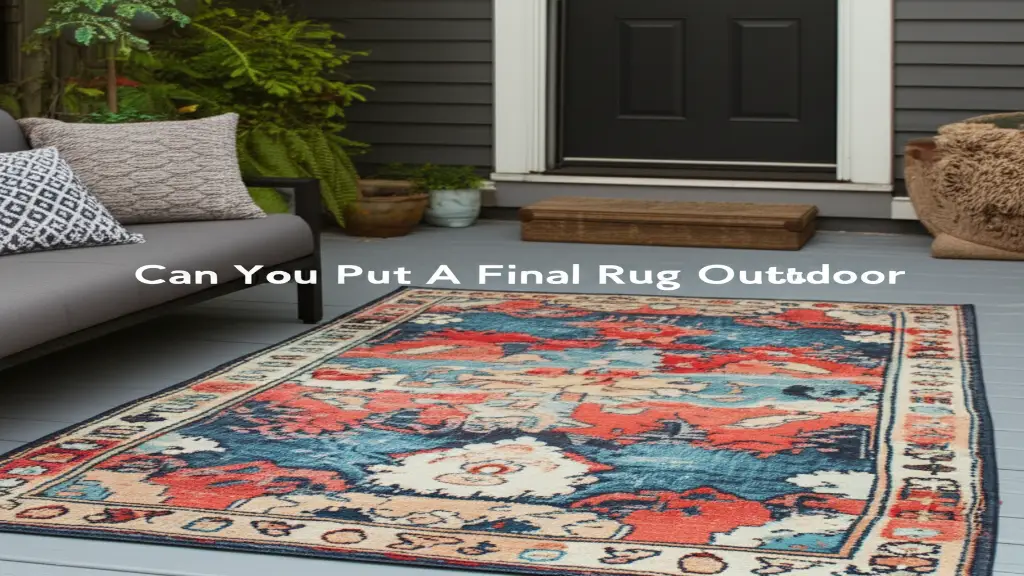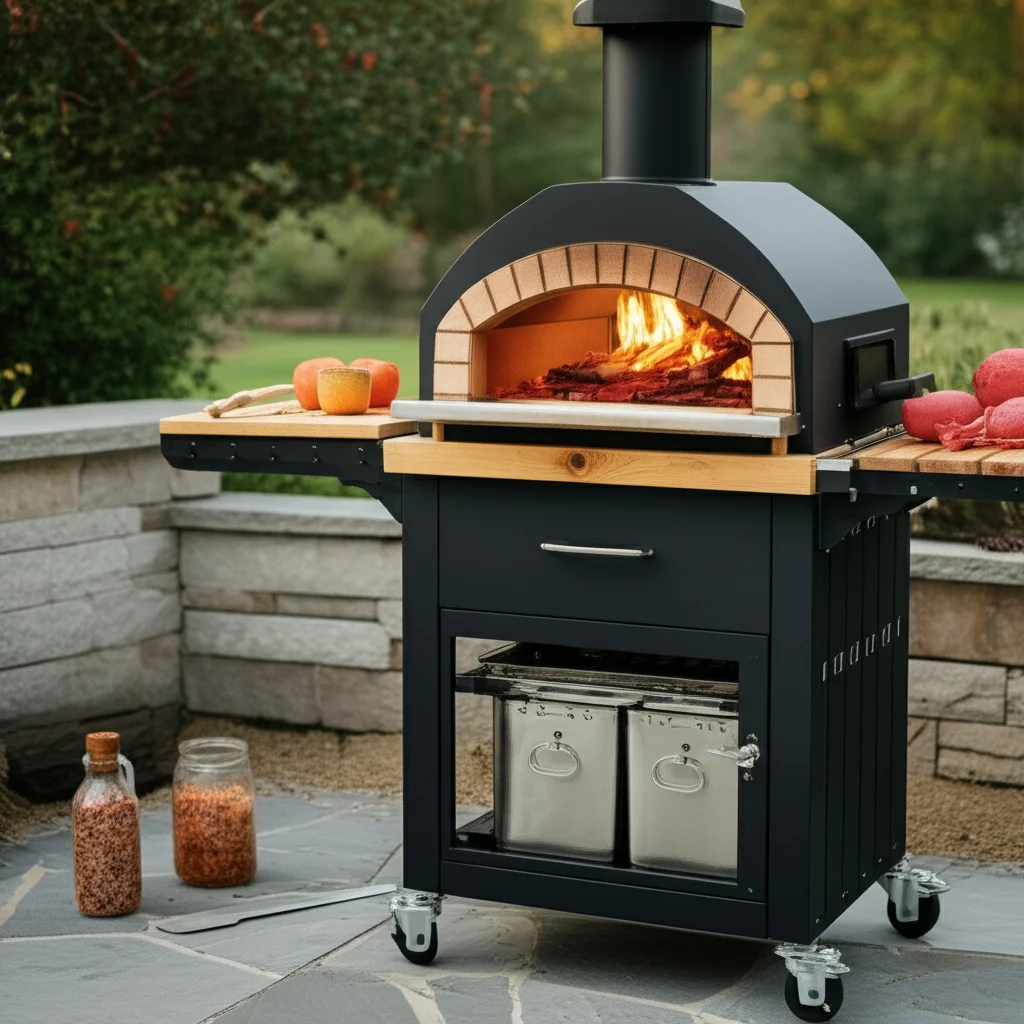· Katria Melrose · Outdoor Living · 22 min read
Is June Good For Outdoor Rugs

Is June Good For Outdoor Rugs?
Imagine stepping out onto your patio, the sun shining, a gentle breeze blowing. Your outdoor space feels like an extension of your home. A beautiful outdoor rug can make this vision a reality. It adds comfort, style, and defines your outdoor living area. Many people wonder about the best time to set up or buy these stylish additions. So, is June good for outdoor rugs? This month brings specific weather patterns that influence rug performance.
June marks the official start of summer in many regions. Days are longer, and temperatures rise. This makes it a perfect time for outdoor activities and home improvements. Outdoor rugs become a focal point in patios, decks, and balconies. They can withstand the elements, but proper understanding is key. We will explore why June is often ideal for outdoor rugs. We will also discuss material choices, placement tips, and essential care. This guide helps you make informed decisions for your outdoor spaces.
Takeaway
- June’s Ideal Weather: Warm, dry days in June create excellent conditions for outdoor rug use and installation.
- Material Selection Matters: Choose rugs made from polypropylene, polyester, or jute for durability and weather resistance.
- Placement is Key: Position rugs under covered areas or in spots with good drainage to protect them from excessive sun and moisture.
- Regular Maintenance: Clean outdoor rugs often to prevent dirt buildup and prolong their lifespan.
- Protection from Elements: Guard against intense sun fading and heavy rain to keep your rug looking new.
June is an excellent month for outdoor rugs. The warm, usually drier weather provides ideal conditions for installation and enjoyment. Proper material choice and consistent care ensure your rug thrives through the summer season.
Understanding June’s Weather for Outdoor Rugs
June weather is typically warm and inviting across most of the Northern Hemisphere. This creates a perfect environment for outdoor living. Many homeowners want to extend their indoor comfort to their patios and decks. Outdoor rugs help achieve this goal. They add warmth, define spaces, and protect surfaces. However, June weather also presents unique challenges.
Temperatures in June are generally high. This warmth is good for drying rugs after rain or cleaning. Sunshine is abundant, which can be a double-edged sword. While it dries out moisture, prolonged direct sunlight can cause colors to fade. Some regions experience heavy rainfall during June, especially tropical or monsoon-prone areas. This moisture can be problematic for rugs not designed for wet conditions. Understanding these weather patterns helps you choose the right rug. It also helps you implement proper care routines.
The Impact of Sun and Heat on Outdoor Rugs
Direct sunlight contains UV rays. These rays can break down fabric dyes over time. This leads to fading. A vibrant blue rug might turn a pale shade after a summer of direct sun. High temperatures can also affect rug materials. Some less durable plastics or natural fibers might become brittle. This reduces the rug’s lifespan.
To combat sun damage, consider the rug’s placement. Placing a rug under a pergola or awning provides shade. This extends the rug’s life. Choose fade-resistant materials. Polypropylene and solution-dyed acrylic are good choices. These materials hold their color better under intense sun. I always look for rugs labeled “UV-stabilized.” This indicates better protection against fading.
Managing Moisture and Rain in June
June can bring unexpected rain showers. Outdoor rugs must handle moisture without developing mold or mildew. A good outdoor rug allows water to drain through it quickly. It also dries fast. Materials like polypropylene are known for their quick-drying properties. They do not absorb much water.
Avoid placing outdoor rugs in areas where water pools. Ensure your patio or deck has good drainage. You can lift the rug periodically after heavy rain. This allows air circulation underneath. This prevents moisture from getting trapped. If a rug stays wet for too long, it will likely grow mold. Mold can damage the rug and create an unpleasant smell. Sometimes, a rug needs a thorough cleaning after consistent rain. You can learn how to clean an outdoor rug effectively after wet conditions.
Best Materials for Outdoor Rugs in June
Choosing the right material is vital for an outdoor rug. This is especially true for June, with its mix of sun and potential rain. Different materials offer varying levels of durability, fade resistance, and water resistance. The best materials stand up to the elements. They also maintain their appearance season after season. Understanding material properties helps you make an informed purchase.
Synthetic fibers generally perform best outdoors. They are engineered to withstand harsh weather. Natural fibers offer a different aesthetic but require more care. Your choice depends on your climate, how much sun your area gets, and your maintenance commitment. I always recommend prioritizing durability for outdoor items.
Synthetic Fibers: Polypropylene, Polyester, and Nylon
Synthetic fibers are the champions of outdoor rugs. They offer excellent resistance to water, mold, and fading.
- Polypropylene (Olefin): This is the most common material for outdoor rugs. It resists moisture, stains, and mildew. Polypropylene is also fade-resistant, especially when solution-dyed. It dries quickly and is easy to clean. It feels soft underfoot. Many of my outdoor rugs are polypropylene because of its low maintenance.
- Polyester: Polyester rugs are soft and vibrant. They resist fading and offer good durability. Some polyester rugs are made from recycled plastic bottles, which is an eco-friendly option. They dry well, but can be less resistant to permanent staining than polypropylene.
- Nylon: Nylon is extremely durable and resistant to abrasion. It handles heavy foot traffic well. While good for indoors, outdoor nylon rugs are less common. They can absorb more water than polypropylene. This makes them slower to dry. They are also usually more expensive.
When considering synthetic materials, look for tags indicating UV stabilization. This ensures the rug keeps its color longer. The “final stuff” in outdoor rugs, often a synthetic blend, is designed for durability. You can find more information about what is that final stuff in outdoor rugs.
Natural Fibers: Jute, Sisal, and Seagrass
Natural fiber rugs bring an organic, earthy feel to outdoor spaces. They are eco-friendly and biodegradable. However, they are generally less weather-resistant than synthetics.
- Jute: Jute rugs are soft, thick, and have a beautiful natural texture. They are best for covered patios or screened-in porches. Jute absorbs water readily. It can develop mold or mildew if left wet. It is not suitable for areas exposed to direct rain.
- Sisal: Sisal is strong and durable. It comes from the agave plant. Sisal rugs are very rigid and have a coarse texture. Like jute, sisal is highly absorbent. It should only be used in very dry, protected outdoor areas.
- Seagrass: Seagrass rugs are naturally water-resistant to some extent. They are smooth and non-porous. This makes them more resilient to moisture than jute or sisal. They can still get damaged by prolonged wetness. Seagrass is a better choice for semi-covered outdoor spaces.
If you choose a natural fiber rug for June, ensure it is in a truly protected spot. Bring it indoors during heavy rain. Natural fibers are usually not as suitable for outdoor power washing. You should also consider how to clean rugs without machine for natural fibers.
Placement Strategies for Outdoor Rugs in June
Proper placement is crucial for the longevity and performance of your outdoor rug. This is especially true during June, when sun exposure and potential rain are high. Strategic positioning helps protect the rug from excessive wear and tear. It also maximizes its aesthetic appeal. A well-placed rug defines your outdoor living area. It makes it feel more inviting and organized.
Think about the specific microclimate of your outdoor space. Does it get full sun all day? Is it fully covered by an overhang? Does water pool in certain spots after rain? Answering these questions helps you determine the best placement. This planning saves you time and money in the long run. I always scout the area before rolling out a new rug.
Covered Patios and Screened-in Porches
These areas offer the most protection for outdoor rugs. They shield the rug from direct sun and heavy rain. This extends the rug’s lifespan significantly. Under a covered patio, you have more flexibility with material choice. You can even use some natural fiber rugs here. The reduced exposure means less fading and less risk of mold.
When placing a rug in a covered area, ensure it fits the space well. It should define the seating or dining area without overwhelming it. Leave enough space around furniture for easy movement. This setup helps create an “outdoor room” feel. It also minimizes cleaning frequency.
Open Decks and Patios
Open areas expose rugs to the full force of the elements. This means more sun, more rain, and more temperature fluctuations. For these spots, choose highly durable, weather-resistant materials. Polypropylene is often the best choice here.
- Sun Exposure: Position the rug where it gets some shade during the hottest part of the day if possible. Consider moving the rug or rotating it periodically. This helps distribute sun exposure evenly.
- Drainage: Ensure the deck or patio drains well. Water should not collect under the rug. If it does, lift the rug regularly to let the surface dry. This prevents mold and mildew from forming underneath.
- Securing the Rug: On open decks, wind can be an issue. Strong June breezes can blow lightweight rugs away. You might need to use rug grippers or furniture to hold it down. Learn how to keep outdoor rugs from blowing away on concrete for more tips.
Consider the layout of your outdoor furniture. The rug should complement the arrangement. It should not impede pathways. I like to center the rug under the main seating arrangement. This anchors the space visually.
Around Pools and Water Features
Rugs around pools need to be extremely water-resistant and quick-drying. They will get wet often. Materials like polypropylene are ideal for these areas. They do not absorb much water and dry very fast. This prevents slip hazards.
Ensure the rug has a non-slip backing, or use a non-slip pad underneath. This is important for safety near water. Regular rinsing of pool chemicals or saltwater is also crucial. These chemicals can degrade rug fibers over time. Choose a color that will not show water stains easily. Darker blues or greens often work well near water.
Essential Maintenance for Outdoor Rugs in June
Maintaining your outdoor rug in June is crucial for its longevity and appearance. The combination of warm weather, increased use, and potential rain means rugs need regular attention. Proper care prevents dirt buildup, mold growth, and premature wear. A well-maintained rug looks good and provides comfort all season long.
Neglecting outdoor rug care can lead to several problems. Dirt and debris can get ground into the fibers. Moisture can lead to mildew and unpleasant odors. Sun exposure causes fading. Implementing a consistent cleaning and protection routine keeps your rug fresh. It also ensures it lasts for many summers to come.
Regular Cleaning Routine
A regular cleaning routine is your best defense against dirt and grime.
- Shake or Vacuum Weekly: For light dirt and loose debris, simply shake the rug out. If it’s too large, use a vacuum cleaner designed for outdoor use or with a hose attachment. This prevents particles from embedding deep into the fibers. I typically do this every few days if my family is using the patio a lot.
- Spot Clean Spills Immediately: Accidents happen. If something spills, blot it up immediately with a clean cloth. Use a mild soap and water solution for tougher spots. Rinse thoroughly with clean water. Quick action prevents stains from setting.
- Deep Clean Monthly or Bi-Monthly: Depending on use and weather, your rug will need a deeper clean. For most synthetic outdoor rugs, you can hose them down. Use a soft brush and a solution of mild soap and water. Scrub gently. Rinse completely to remove all soap residue. Allow the rug to dry thoroughly in a sunny, well-ventilated spot. Some outdoor rugs are machine washable, so check the care label. You can find more information about can you put June rugs in washing machine for specific instructions.
For heavier dirt, some people wonder can you power wash a June rug. While possible for very durable synthetic rugs, use extreme caution and a low-pressure setting.
Protecting Against Sun Fading and Moisture
Protection goes beyond just cleaning. It involves proactive steps to mitigate damage.
- Rotate the Rug: If your rug is in a sunny spot, rotate it every few weeks. This ensures that sun exposure is even across the rug. It helps prevent uneven fading.
- Use UV Protectant Sprays: Some sprays are available that offer extra UV protection for outdoor fabrics. Apply these according to product instructions. They can extend the life of your rug’s color.
- Lift During Heavy Rain: If a severe thunderstorm is expected, consider rolling up your rug and storing it temporarily. This prevents it from getting saturated. If it does get very wet, lift it to dry fully. Ensure the ground underneath also dries to prevent mildew on the patio itself.
- Winter Storage: As summer ends, clean your rug thoroughly before storing it. Store it in a dry, covered area during the off-season. This prevents damage from freezing temperatures and prolonged dampness. This proactive approach keeps it ready for next June.
Remember, consistent care extends the life and beauty of your outdoor rug. It makes your outdoor space more inviting.
Benefits of Outdoor Rugs in June
June brings ideal conditions for maximizing the benefits of outdoor rugs. As people spend more time outdoors, these rugs transform patios, decks, and balconies. They offer comfort, style, and practicality. An outdoor rug can elevate your entire outdoor living experience. It makes your space feel more like a true extension of your home.
The warmth and sunlight of June encourage relaxation and entertaining outdoors. This is when an outdoor rug truly shines. It helps define seating areas for guests. It also provides a soft surface for bare feet. I love how a rug can pull together all the outdoor furniture. It creates a cohesive look.
Enhancing Outdoor Aesthetics and Comfort
Outdoor rugs are powerful design elements. They add color, texture, and pattern to your space.
- Define Zones: On a large patio, a rug can clearly define a dining area from a lounge area. This creates distinct “rooms” outdoors. It helps organize your furniture.
- Add Warmth and Coziness: A rug instantly makes a hard, cold patio surface feel warmer and more inviting. It adds a layer of comfort underfoot. This is especially nice on cool June evenings.
- Introduce Style and Personality: Choose a rug that reflects your personal taste. Bold patterns can make a statement. Neutral tones create a serene backdrop. It’s an easy way to update your outdoor decor without major renovations.
- Comfort Underfoot: Walking barefoot on a warm outdoor rug is much more pleasant than on hot concrete or splintery wood. This soft surface makes your outdoor area more comfortable for everyone, including children and pets.
Practical Advantages for June Outdoor Living
Beyond aesthetics, outdoor rugs offer several practical benefits.
- Protect Decking/Patio Surfaces: Rugs act as a barrier between furniture legs and your patio surface. This prevents scratches and wear on your deck or concrete. They can also hide existing imperfections on older surfaces.
- Reduce Glare and Heat: On sunny June days, a light-colored patio can reflect a lot of glare. A rug absorbs some of this light. It makes the space more comfortable on the eyes. Darker rugs can absorb heat, while lighter ones reflect it, helping to keep the area cooler underfoot.
- Improve Traction: Some patio surfaces can become slippery when wet. An outdoor rug can provide better traction. This reduces the risk of slips and falls, especially around pools or during light rain.
- Easy to Clean: Many outdoor rugs are designed for easy maintenance. Spills and dirt can often be hosed off. This makes them ideal for high-traffic areas during summer gatherings. You can check specific cleaning methods for your rug, as some can be machine washed. For general outdoor fabric cleaning, you might also find tips on how to clean outdoor fabric.
- Noise Reduction: Rugs can help absorb sound. This creates a quieter, more peaceful outdoor environment. This is especially helpful if your patio is near a busy area.
Overall, outdoor rugs enhance the enjoyment of your outdoor space throughout June and the rest of summer. They are a functional and beautiful investment.
Designing Your June Outdoor Space with Rugs
Designing an outdoor space for June involves blending aesthetics with functionality. Outdoor rugs serve as the foundation for your design scheme. They anchor furniture and define areas. The goal is to create a cohesive and inviting environment. This space should feel like a true extension of your home. It should also be resilient to June’s weather.
Consider your personal style and the existing elements of your outdoor area. Do you want a vibrant, playful look or a serene, minimalist retreat? The rug’s color, pattern, and size will significantly influence the overall feel. Thinking about these details upfront helps you create a beautiful and practical outdoor oasis.
Choosing the Right Size and Shape
Size and shape are critical for an outdoor rug. They affect how well the rug defines your space.
- For Seating Areas: The rug should be large enough to comfortably fit the front legs of all major furniture pieces on it. Ideally, all legs of sofas and chairs should sit on the rug. This creates a unified look. For a smaller space, ensure at least the front two legs of each piece are on the rug. This still gives a defined area.
- For Dining Areas: The rug should be large enough so that all chair legs remain on the rug, even when pulled out from the table. This prevents chairs from catching on the rug’s edge. Measure your table and add at least two feet on each side.
- Shape: Rectangular rugs are most common and versatile. They work well for defining linear spaces. Round or oval rugs can create a softer, more intimate feel. They are excellent for smaller, circular seating arrangements or to break up harsh lines.
- Proportion: Ensure the rug’s size is proportionate to your outdoor area. A rug too small will look lost. A rug too large can overwhelm the space. Aim for a balanced look.
I always recommend measuring your space carefully before buying. Use painter’s tape to outline the rug size on your patio. This helps visualize the fit.
Selecting Colors and Patterns for Summer
Colors and patterns can dramatically change the mood of your outdoor space.
- Color Palette:
- Light Colors: Reflect sunlight and can make a space feel cooler and more expansive. They might show dirt more easily.
- Dark Colors: Absorb heat and can make a space feel cozier. They hide dirt better.
- Vibrant Hues: Think blues, greens, and yellows. These are popular for summer. They add energy and a playful vibe. They pair well with the natural greenery of June.
- Neutrals: Greys, beiges, and browns offer a timeless foundation. They allow other decor elements to stand out. They create a calm, sophisticated atmosphere.
- Patterns:
- Geometric Patterns: Modern and bold, they add visual interest.
- Stripes: Can lengthen or widen a space depending on orientation.
- Abstract Designs: Unique and artistic, perfect for a contemporary look.
- Nature-Inspired: Leaves, flowers, or organic textures complement the outdoor setting.
- Harmonize with Surroundings: Consider the color of your house, outdoor furniture, and existing landscaping. Choose a rug that complements these elements. It should feel like a natural part of the overall design. For example, if you have vibrant outdoor cushions, a more subdued rug might be best. If your furniture is neutral, a bold rug can add a pop of color.
Think about how the rug will look with different lighting throughout the day in June. A color that looks great in bright sun might appear different in the evening.
Extending the Life of Your Outdoor Rug Beyond June
While June is a great starting point for your outdoor rug, you want it to last much longer. Extending its life means protecting it from the elements through all seasons. It also involves consistent care that adapts to changing weather conditions. A well-cared-for outdoor rug can provide years of enjoyment.
Thinking long-term about your outdoor rug investment is smart. Environmental factors, foot traffic, and lack of proper cleaning can all shorten a rug’s lifespan. Implementing protective measures and a seasonal maintenance plan helps ensure durability. I always tell friends that good care is the best way to save money on replacement rugs.
Seasonal Care and Storage
Your outdoor rug’s needs change with the seasons.
- Summer (June-August): Continue with regular vacuuming and spot cleaning. Deep clean every 1-2 months. If heavy rain is expected, consider rolling up the rug or placing it under shelter. Ensure it dries fully after any prolonged wetness. This prevents mold and mildew in the warm, humid air.
- Fall (September-November): As temperatures drop and leaves fall, increase vacuuming to remove debris. Deep clean the rug one last time before winter storage. Pay attention to any stubborn stains from summer use.
- Winter (December-February): This is when most outdoor rugs should be stored. Thoroughly clean and dry the rug before storage. Roll it tightly and secure it. Store it in a cool, dry place like a garage, shed, or basement. Do not store it while it is damp, as this will lead to mold.
- Spring (March-May): Unroll your rug and inspect it for any signs of wear or damage from storage. Give it a good vacuum and a light spot clean if needed. Prepare it for re-installation as warmer weather approaches.
Proper storage prevents damage from extreme cold, snow, and persistent dampness. It also keeps pests away from the fibers.
Addressing Specific Challenges
Outdoor rugs face unique challenges beyond daily dirt.
- Fading: Even UV-stabilized rugs can fade over time. Rotate your rug regularly to even out sun exposure. If possible, provide shade during peak sun hours. Consider a darker color or a pattern that hides minor fading.
- Mold and Mildew: This is a common issue with moisture. Always ensure the rug dries completely after rain or cleaning. Lift the rug occasionally to allow the patio surface underneath to dry. If mold appears, use a bleach-free mildew remover safe for your rug material. Hydrogen peroxide solutions can also work. Always test in an inconspicuous area first.
- Stains: Act fast on spills. For tough stains, refer to the manufacturer’s cleaning instructions. For general outdoor rug cleaning tips, you can also look at how to clean an outdoor rug. Some cleaning solutions are designed specifically for outdoor fabrics.
- Wear and Tear: High-traffic areas will show wear faster. Consider placing smaller, replaceable accent rugs in these spots. Choose a rug with a high pile density for better durability in busy zones. If edges start fraying, you can often trim them carefully.
By understanding these challenges and implementing these solutions, your outdoor rug will remain a vibrant and functional part of your outdoor space for many Junes to come.
Choosing Your Ideal Outdoor Rug for June and Beyond
Selecting the perfect outdoor rug is an exciting part of creating your ideal outdoor living space. It’s about more than just aesthetics; it’s about finding a rug that can withstand June’s elements and continue looking great for seasons to come. You need to balance style, durability, and practicality. The best choice aligns with your lifestyle, climate, and design preferences.
Making an informed decision ensures satisfaction and value. Consider where the rug will go, how much sun and rain it will endure, and how much traffic it will receive. With so many options available, taking the time to choose wisely pays off. I always suggest listing your priorities before you start shopping.
Key Considerations Before Buying
Before you commit to a purchase, think about these crucial factors:
- Climate: Do you live in a hot, sunny area with minimal rain, or a humid region prone to summer thunderstorms? Your climate heavily dictates the material you should choose. Dry climates are more forgiving for natural fibers. Wet climates demand synthetic, quick-drying options.
- Placement: Will the rug be fully exposed to the elements, or will it be under a covered patio? As discussed, covered areas offer more flexibility in material choice. Fully exposed areas require maximum durability and UV resistance.
- Foot Traffic: Is this a high-traffic area, like an entryway, or a low-traffic spot, like a quiet corner? High-traffic areas benefit from dense, durable materials like polypropylene.
- Maintenance Commitment: How much time are you willing to spend on cleaning and care? Some materials are virtually maintenance-free, while others require more frequent attention. If you want easy care, stick to synthetics.
- Aesthetics: Does the rug’s color, pattern, and texture complement your existing outdoor furniture and home exterior? The rug should enhance your outdoor decor, not clash with it. Think about the overall vibe you want to create.
- Budget: Outdoor rugs come in a wide range of prices. Set a budget before you start shopping. Remember that investing a little more upfront in a quality rug can save money on replacements down the line.
Where to Buy and What to Look For
Outdoor rugs are widely available, both online and in physical stores.
- Home Improvement Stores: Large chains often have a good selection of durable, affordable synthetic rugs. They are a great place to see rugs in person and compare materials.
- Department Stores/Home Decor Stores: These stores might offer a wider range of styles and higher-end options.
- Online Retailers: Online stores provide the largest selection, competitive pricing, and user reviews. Always check customer photos and reviews for an accurate sense of color and texture. Ensure the return policy is clear, especially since you can’t touch the rug before buying.
- Specialty Rug Stores: These shops often carry unique designs and can offer expert advice. They might also have a better selection of natural fiber outdoor rugs.
When you are looking for your outdoor rug, pay attention to the following:
- Material Label: Always check the tag for the exact material composition. Look for terms like “100% Polypropylene,” “UV stabilized,” or “weather-resistant.”
- Weave and Density: A tighter weave and denser pile usually indicate better durability.
- Backing: A non-slip backing is a bonus, especially for open areas or around pools. If the rug doesn’t have one, consider purchasing a separate outdoor rug pad.
- Warranty: Some higher-quality rugs come with a warranty against fading or manufacturing defects. This can offer peace of mind.
Taking the time to consider these aspects will help you find an outdoor rug that not only looks fantastic in June but also stands the test of time and weather. My own experience has taught me that a little research goes a long way.
FAQs About Outdoor Rugs in June
Q1: Can outdoor rugs be left out in June rain?
A1: Yes, most modern outdoor rugs are designed to withstand rain. Materials like polypropylene are quick-drying and mold-resistant. However, it’s best to ensure the rug and the surface beneath it dry completely after heavy rainfall to prevent mildew. Lift the rug if water pools underneath





